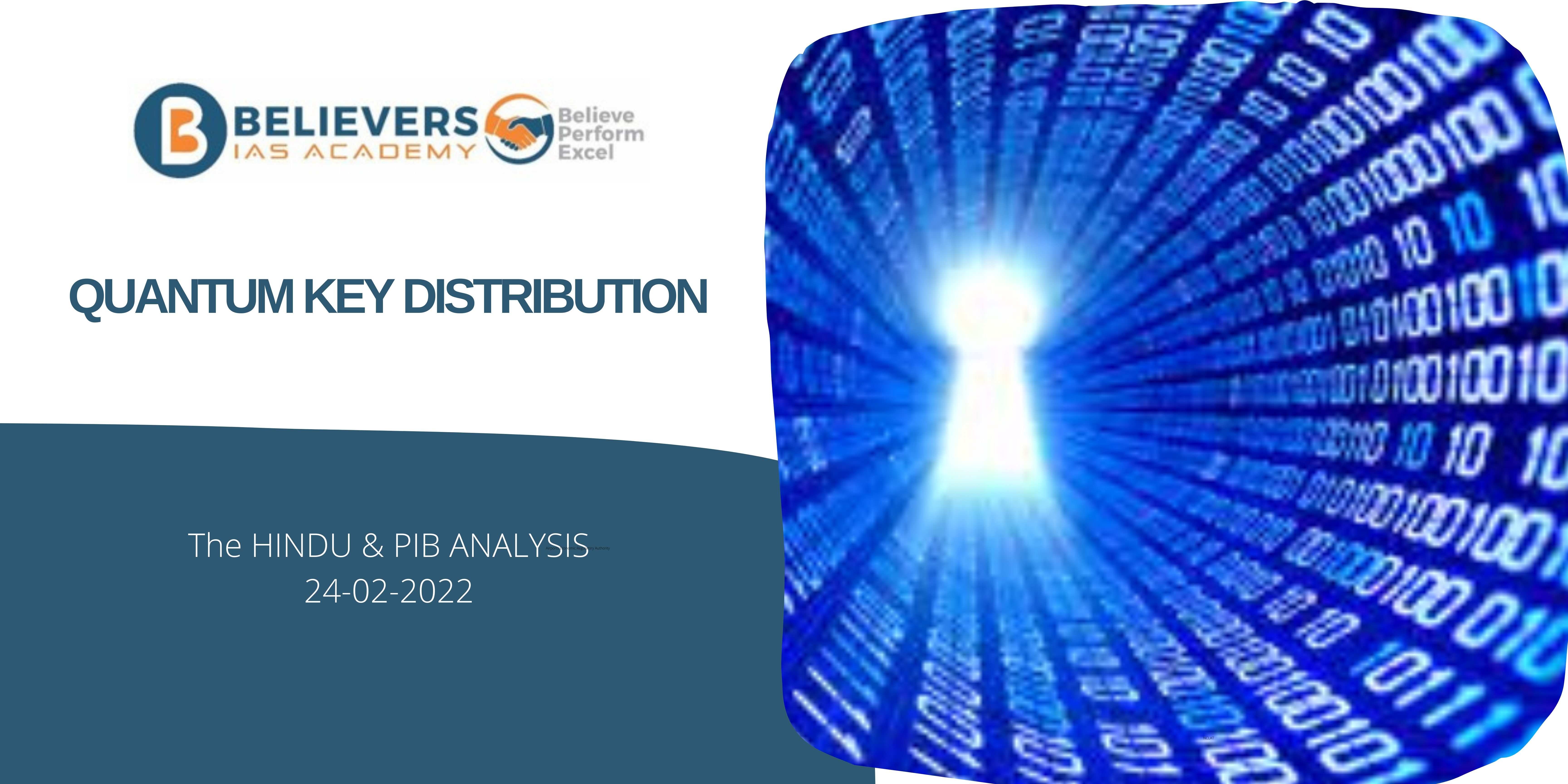Quantum Key Distribution
Context:
- A joint team of scientists from Defence Research and Development Organisation (DRDO) and Indian Institute of Technology (IIT) Delhi, for the first time in the country successfully demonstrated Quantum Key Distribution link between Prayagraj and Vindhyachal in Uttar Pradesh, a distance of more than 100 kilometres.
About:
- This technological breakthrough was achieved over a commercial grade optical fibre already available in field.
- With this success, the country has demonstrated indigenous technology of secure key transfer for bootstrapping military grade communication security key hierarchy.
- The performance parameters have been measured and have been found to be repetitively within the reported international standards at sifted key rates of up to 10 KHz.
- This technology will enable security agencies to plan a suitable quantum communication network with indigenous technology backbone.
Background:
- Quantum key distribution (QKD) is a secure communicationmethod which implements a cryptographic protocol involving components of quantum mechanics.
- It enables two parties to produce a shared randomsecret key known only to them, which can then be used to encrypt and decrypt messages.
- It is often incorrectly called quantum cryptography, as it is the best-known example of a quantum cryptographic task.
- An important and unique property of quantum key distribution is the ability of the two communicating users to detect the presence of any third party trying to gain knowledgeof the key.
- This results from a fundamental aspect of quantum mechanics: the process of measuring a quantum systemin general disturbs the system.
- A third party trying to eavesdrop on the key must in some way measure it, thus introducing detectable anomalies.
- By using quantum superpositionsor quantum entanglement and transmitting information in quantum states, a communication system can be implemented that detects eavesdropping.
- If the level of eavesdropping is below a certain threshold, a key can be produced that is guaranteed to be secure (i.e., the eavesdropper has no information about it), otherwise no secure key is possible and communication is aborted.
Source The Hindu




